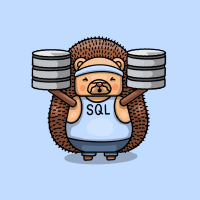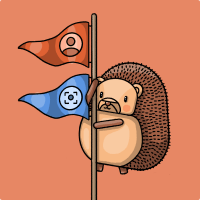People
Team members
![]()
Eric Duong
Team lead
Software Engineer
![]()
Li Yi Yu
Full Stack Engineer
![]()
Neil Kakkar
Software Engineer
Mission
Makers everywhere get better at building products because of PostHog
Q4 2022 Goals
Objective: Eliminate the biggest reasons product engineers would choose a competitor over PostHog Feature Flags
- Key Result: Support JSON in feature flags (https://github.com/PostHog/posthog/issues/13144)
- Key Result: Make feature flags more resilient (https://github.com/PostHog/meta/pull/74)
- Key Result: Release flag scheduling (auto-rollouts) to 5 happy Beta users and/or Release auto Rollbacks to general availability
- Key Result: Double the number of organizations that use feature flags
Objective: Make the experience of creating a feature flag in PostHog slicker
- Key Result: Embed docs with a side panel into the feature flag creation experience
- Key Result: Integrate feature flags into CI with code references
- Key Result: Allow users to copy and compare feature flags across projects
- Key Result: Reduction in time spent between creating a feature flag and receiving the first event
Values
- Fast, iterative and high output rather not slow and thoughtful - achieving this
- Feedback-driven not spec-driven - we do a decent job at this
- Missionary (we have a clear problem definition and are aligned on how impactful a solution would be) not mercenary - glimpses of this
- Collaborative not lone wolf - glimpses of this
Personas
Company Persona
- Primary
- Size:
- 20-75 employees
- Stage:
- Post-PMF
- Series A-D
- Customer type:
- B2B/B2C/(B2B2C)
- High expectation traits:
- Use the modern data stack
- Frontend uses typescript and react
- High-growth
- Size:
- Not:
- API companies
- Shopify stores/no-code companies
User Persona
- Primary
- Role
- Product-minded front-end engineer
- Growth engineer
- Seniority
- Decision-making seat on product
- Senior engineer
- IC
- High expectation traits
- Reads HackerNews
- Educated about the other feature flagging/experimentation tools in the space
- Needs high-reliability and high-performance
- Uses best-in-class tools such as Linear/Figma
- Role
- Secondary:
- Role:
- Product Manager
- Role:
- Not:
- Role:
- Backend engineer
- Marketing
- Role:
Jobs to be done
Feature flags
- Primary
- Safely rollout frontend features with the least risk
- Secondary
- Persistent feature flags e.g. country/pay gate
- Build/test in production
- Enable beta users to try out experimental features ahead of time
Experimentation
- Primary
- Test whether a particular feature achieves the desired change in user behavior
Feature ownership
You can find out more about the features we own here
Long term vision
Imagine Bob is a product manager, and Alice is an engineer, both of whom love using PostHog.
During their weekly growth review, Posthog shows them that one of their workflows is performing 50% worse than other SaaS companies with a similar flow. They decide to build a new feature together, but they're unsure of the impact, so Bob & Alice decide to gate the feature via a feature flag.
Alice builds the feature and runs the PostHog CLI, automatically converting his feature branch to a feature-flagged version. During creation, he selects the team template they normally use, called "Autorollout based on conversion metric", using the conversion metric that Posthog suggests. The feature progressively rolls out to internal users, then to beta users, then to remaining users. If their conversion metric falls by more than 20% the feature automatically rolls back and alerts their team. Alice requests a feature flag review from Bob.
Bob checks the Posthog UI and because it's such an important feature - adds a safety condition for Sentry errors increasing by 30% and a few counter metrics. This should result in an automatic rollback as well. Bob starts the experiment.
Thankfully, nothing goes wrong when the feature is rolled out. The team is disappointed that the feature doesn't seem to move any of the core company metrics, however. This doesn't fit into either of Alice's or Bob's model, so they dig deeper why this was the case.
Before they even start, PostHog automatically does some impact analysis on their core metrics, and generates some insights into what properties are highly correlated with conversion & which aren't.
As it turns out, people in USA and India love their new feature and show a 40% increase in conversion. Other countries, especially the UK, seem to dislike it so much that it negatively affects conversion. In the end, these forces balance out, leading to similar total conversion rates.
They suspect it might have something to do with their positioning in other countries, so they run a marketing experiment using PostHog, where PostHog automatically generates recommended copy text to try out. It generates 5 variants, and they test these in all countries.
As it turns out, copy wasn't the issue, and there's no significant change here. They watch a few recordings from the experiment to confirm there's nothing off here.
Since it's not a positioning issue, Bob & Alice decide that it makes sense to introduce some personalisation, and let people opt-in to the new feature, and have it on by default for USA and India. They can customise this right from the feature flag, and set this up such that any users who opt-in on their UI automatically get the flag.
PostHog keeps analysing metrics for this flag over time, and notifies Bob and Alice when their customers behaviour change. For example, if the conversion for users in UK has taken a turn for the better, or if enterprise customers have taken a turn for the worse.
Our long term vision is to make all of this possible.
What we're building
Self-hosted SQL access
To fully support our technical users, we need to allow them to ask any sort of question about their data that might not be fit for an interface. For this reason, we're working on a feature to allow direct SQL access to PostHog data, so that users may query it directly.
![]()
Progress
Users & recordings linked to feature flags
We want to make it easier for those who use feature flags to get information on users attached to a particular feature flag, and gather more information on those users' experience through session recordings.
![]()
Progress




